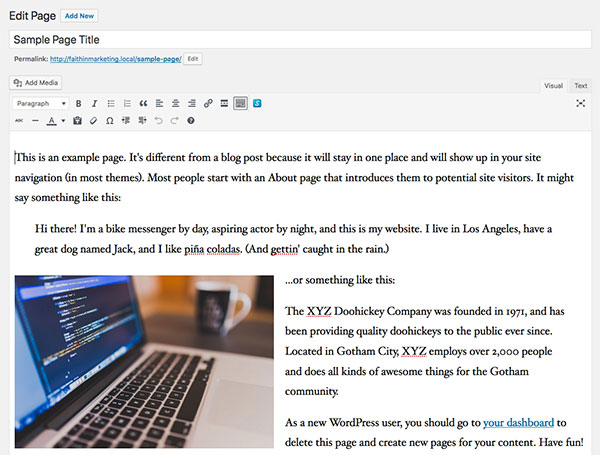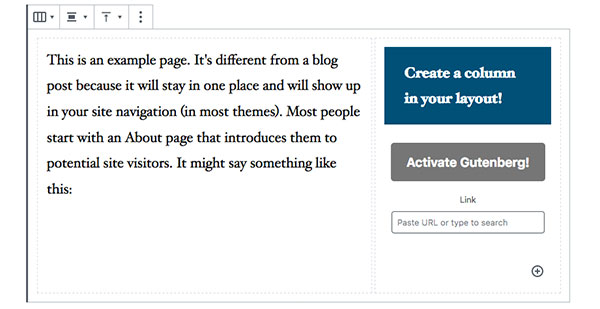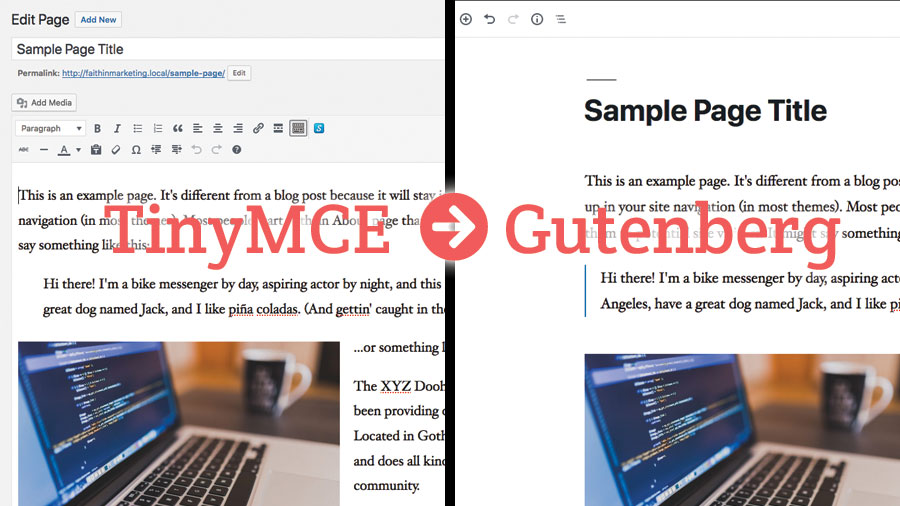Change is hard. But sometimes change is for the better.
For over a decade, Faith in Marketing has been designing and developing custom WordPress themes. We found that our web clients appreciate its ease of use, allowing for instant updates to their website. In August 2018 WordPress introduced the Gutenberg editor in “beta mode” which would shift how we add content to our websites from a document-style editor to a “block” type editor. At its introduction, Faith in Marketing has been testing and reviewing the new editor and contributing to the release of WordPress 5.0, which includes Gutenberg as the standard editor. We’re happy to say that they have taken some of our suggestions and fixed the bugs that we have brought to light.
The Gutenberg Difference

Prior to WordPress 5.0, adding content the “Classic” TinyMCE editor, limited you to a text editor . To make any kind of layout would need plugins such as Elementor or Page Builder. These extra plugins add to the load time of pages — especially when editing a page.
Gutenberg works in “blocks” to deal with certain types of content such as images, text, buttons and headlines. You can move these blocks around the page (typically up and down). Some blocks are customizable so that you can add background and text colors. There is a bit of a learning curve when learning Gutenberg, but once you have the hang of it, it is a very powerful editor that gives you as close as possible to a true WYSIWYG (what-you-see-is-what-you-get) editor.

Blocks, blocks and more blocks!
Gutenberg comes standard with blocks that a typical user might need — text, images, buttons, headlines, video, blockquotes, lists, tables, etc. They have even included the ability to add columns and create beautiful “hero” headers that you find on most modern websites.

Plugin developers have also started to convert their plugins to work with the block system — including us! We are working diligently to convert your custom plugins to work with Gutenberg blocks and are developing custom themes with Gutenberg in mind for future websites.
Our existing web clients have Gutenberg.

Wait, what?
Yes, if you are one of our web clients, you most likely have Gutenberg. For security purposes, we keep all the websites that we host updated to the latest version of WordPress — which includes Gutenberg. To prevent you from the “shock” of the new editor, we installed a plugin that allows you to edit in “Classic Mode.”
Eventually WordPress will stop supporting the Classic Editor. We think it’s a great idea to stay ahead of the game and test out Gutenberg on a private page before converting your whole site.
What’s next?
We want to make sure you have the latest technology available to you. WordPress is constantly improving its software as more and more contributors are finding features to include and bugs to fix.
If your site needs an update or if you would like to test Gutenberg contact us at (858) 877-3733 and we’ll deactivate the “Classic Editor.” Don’t worry, your current content will not be lost — it will just be stored in a new block that utilizes the old editor. And if you need help, we’re just an email or phone call away.


You must be logged in to post a comment.